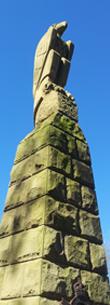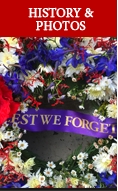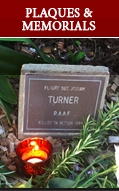| |
 Private R.P Jensen, Gallipoli & WWI Veteran. Private R.P Jensen, Gallipoli & WWI Veteran.
Robert Jensen 581 enlisted in the Third Battalion 1st Division in September 1914. After training at Randwick he was on the first convoy out of Australiia on board the SS Euripedes. He was at the Landing and Evacuation of Gallipoli and was honourably discharged on 12 December, 1918.
Like many of his generation he signed up as a teenager in what he thought would be a great adventure but what turned out to be a horrendous experience in the trenches and later in Egypt, Greece, Turkey, France, and Belgium.
During his military service he was shot three times and was repatriated to England to recover from serious wounds to the leg and back.
Upon his returned to Australa he married and settled in Georgetown (Newcastle) till his death at age 84.
Robert was a founding member of the Gallipoli Legion Club, Hamilton.
|

|
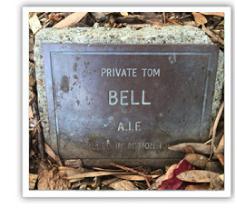 Private Thomas Bell. Private Thomas Bell.
Thomas Bell was born in Wollongong in 1886. He was working as a miner and living in Merewether with his wife and young daughter when he enlisted at Maitland in September 1915. He was 29. Thomas served in the 20th Australian Infantry Battalion. He was killed in action on April 8th, 1918 at a place called HANGARD WOOD in Picardie which is a locality south of Villiers - Bretonneux in Northern France.
Thomas was a stretcher bearer. Not an easy task for someone who was only 5' 2" tall! At the time of his death he was sleeping in a dugout when an enemy shell landed on him. He was badly mutilated and died immediately. Thomas was, and I quote "buried in that spot and a suitable cross was erected over the grave of this soldier"
He was survived by his wife Beatrice and a young daughter, recorded only as C Bell both of Margaret St, Merewether.
|

|
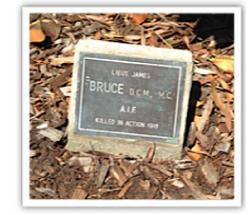 Lieutenant James Bruce MC DCM. Lieutenant James Bruce MC DCM.
James Bruce came to Australia from Scotland when still a child. He eventually married and settled at Pelaw Main, where he worked in the coal mines. He enlisted in The Wallabies recruiting march at Kurri Kurri on January 3rd, 1916 and was drafted into the 34th Infantry Battalion. He left Australia for the battlefields with the rank of Corporal in May, 1916 He was Captain Clarence Jeffries' Company Sergeant Major during the second battle at Passchendaele. When Jeffries was killed by machine gun fire, and after all remaining officers were killed, Bruce organised the remaining members of the battalion and ordered them to dig a new defence line which was held till the order to withdraw was given. For his gallantry he was awarded the Distinguished Conduct Medal. For further gallantry at Villers-Bretonneux in April 1918 he was awarded the Military Cross.
He was promoted to the rank of Lieutenant but during a battle at Sailly-le-Sec on July 17th, 1918, he was killed when a German artillery shell exploded.
Officially Lieutenant James Bruce, MC DCM, he was known by the enemy as "The Ginger Haired Devil". He was 39 at the time of his death and was survived by his wife, Louisa, and their children
.
|

|
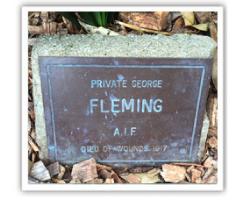 Private George Fleming. Private George Fleming.
Private George Fleming was born in Newcastle and was a resident of Islington, working as a fitter's labourer when he enlisted at the age of 36 in May, 1916. He served in the 36th Infantry Battalion in France. Little is known of George's story other than he was killed in action on 8th June 1917 at the age of 37, barely a year after he enlisted.
He has a memorial at Port-D' Achelles Military Cemetery in North Calais, France.
George Fleming was the father of five children: 4 girls and 1 boy - Florence, Marjorie, Frances, Elizabeth and Donald. He was also survived by his wife, May.
|

|
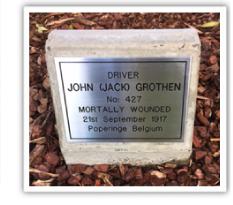 Driver John Grothen, No. 427, 6th Brigade, AIF. Driver John Grothen, No. 427, 6th Brigade, AIF.
John “Jack” Grothen signed up for the AIF on July 20th, 1915, and trained at Liverpool Army Camp. He was a Stockton lad, the eldest of five children born to Margaret and William Grothen.
He grew up at The Junction and worked as a labourer around Newcastle before studying to become an electrical engineer.
Jack left Australia on the Beltana in March, 1916 and went to Egypt for further training. He first saw service as a gunner in the Suez area. While in Egypt he trained as a driver and was in charge of two horses and a transport carriage. His job was to cart ammunition to the guns at the front.
In June 1916 he moved on to Fromelles and was in the Battle of the Somme. In his diary he recounts the misery of mud and cold. When the horses could not carry the loads of ammunition, the men carried it on their own backs.
After some leave in the UK, he resumed duty in September 1917 and took part in the Battle of Menin Road Ridge. On September 21, 1917, Jack was wounded by schrapnel from a bomb dropped from a plane. He was taken to a casualty station near Ypres where he died later that day, aged 28. He is buried in Lijssenthoek Military Cemetery in Flanders.
|

|
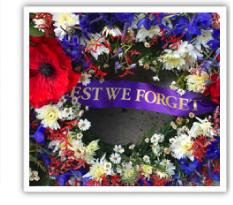 Private Charles Parker. Private Charles Parker.
Charles Joseph Parker was born in 1886 and grew up in The Junction. He was the son of English settlers. Charles worked in the family business, a retail sports store in Hunter Street, Newcastle, before enlisting in the 4th Battalion, 26th Reinforecement in 1917 at the age of 31. He fought in the Somme and was injured by an exploding shell in September 1918. In 1926 he married Thelma Campbell, whose fiance had been killed at Gallipoli in the early days of WW1.
Charles Parker was an alderman on Newcastle City Council for 10 years and Lord Mayor in 1931 and 1932. He served on the NSW Legislative Council from 1932 to 1934. His daughter, Laurie Campbell Parker, who has five daughters, lives in Newcastle and is aged 90 (2018). Private Charles Parker died in 1956.
|

|
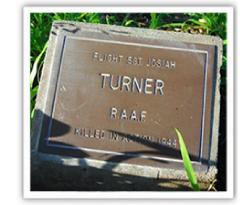 Flight Sergeant Josiah Turner, 77 Squadron, RAF. Flight Sergeant Josiah Turner, 77 Squadron, RAF.
Turner was one of many young RAAF members who were seconded to the RAF to defend Britain. A rear gunner in a Wellington Bomber crew, he was killed in a bombing mission over the Bucharest Railway Yards in Rumania on the 7th July, 1944. He was a descendent of a pioneering Newcastle family. He is buried in the Commonwealth War Grave in Klagenfurt, Austria. His widow, Joyce, died in 1990. His only child, Kaye Duffy, still lives in Newcastle. He is also survived by three grandsons and five great grandchildren.
|
 |
|
|
